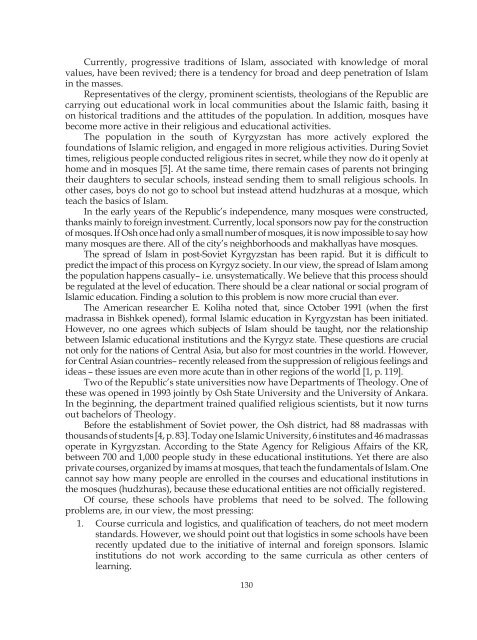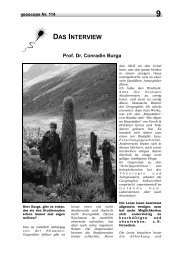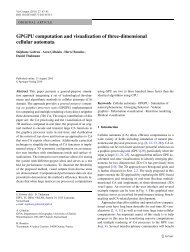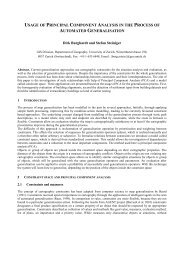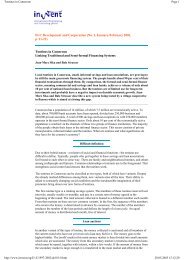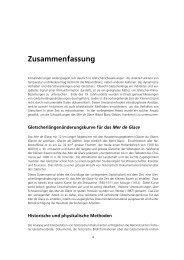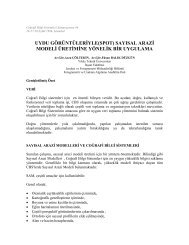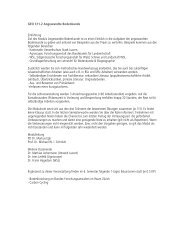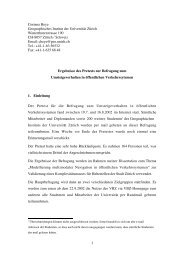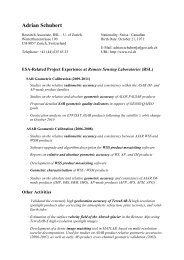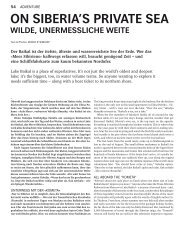KYRGYZSTAN TODAY Policy briefs on - Department of Geography
KYRGYZSTAN TODAY Policy briefs on - Department of Geography
KYRGYZSTAN TODAY Policy briefs on - Department of Geography
Create successful ePaper yourself
Turn your PDF publications into a flip-book with our unique Google optimized e-Paper software.
Currently, progressive traditi<strong>on</strong>s <strong>of</strong> Islam, associated with knowledge <strong>of</strong> moral<br />
values, have been revived; there is a tendency for broad and deep penetrati<strong>on</strong> <strong>of</strong> Islam<br />
in the masses.<br />
Representatives <strong>of</strong> the clergy, prominent scientists, theologians <strong>of</strong> the Republic are<br />
carrying out educati<strong>on</strong>al work in local communities about the Islamic faith, basing it<br />
<strong>on</strong> historical traditi<strong>on</strong>s and the attitudes <strong>of</strong> the populati<strong>on</strong>. In additi<strong>on</strong>, mosques have<br />
become more active in their religious and educati<strong>on</strong>al activities.<br />
The populati<strong>on</strong> in the south <strong>of</strong> Kyrgyzstan has more actively explored the<br />
foundati<strong>on</strong>s <strong>of</strong> Islamic religi<strong>on</strong>, and engaged in more religious activities. During Soviet<br />
times, religious people c<strong>on</strong>ducted religious rites in secret, while they now do it openly at<br />
home and in mosques [5]. At the same time, there remain cases <strong>of</strong> parents not bringing<br />
their daughters to secular schools, instead sending them to small religious schools. In<br />
other cases, boys do not go to school but instead attend hudzhuras at a mosque, which<br />
teach the basics <strong>of</strong> Islam.<br />
In the early years <strong>of</strong> the Republic’s independence, many mosques were c<strong>on</strong>structed,<br />
thanks mainly to foreign investment. Currently, local sp<strong>on</strong>sors now pay for the c<strong>on</strong>structi<strong>on</strong><br />
<strong>of</strong> mosques. If Osh <strong>on</strong>ce had <strong>on</strong>ly a small number <strong>of</strong> mosques, it is now impossible to say how<br />
many mosques are there. All <strong>of</strong> the city’s neighborhoods and makhallyas have mosques.<br />
The spread <strong>of</strong> Islam in post-Soviet Kyrgyzstan has been rapid. But it is difficult to<br />
predict the impact <strong>of</strong> this process <strong>on</strong> Kyrgyz society. In our view, the spread <strong>of</strong> Islam am<strong>on</strong>g<br />
the populati<strong>on</strong> happens casually– i.e. unsystematically. We believe that this process should<br />
be regulated at the level <strong>of</strong> educati<strong>on</strong>. There should be a clear nati<strong>on</strong>al or social program <strong>of</strong><br />
Islamic educati<strong>on</strong>. Finding a soluti<strong>on</strong> to this problem is now more crucial than ever.<br />
The American researcher E. Koliha noted that, since October 1991 (when the first<br />
madrassa in Bishkek opened), formal Islamic educati<strong>on</strong> in Kyrgyzstan has been initiated.<br />
However, no <strong>on</strong>e agrees which subjects <strong>of</strong> Islam should be taught, nor the relati<strong>on</strong>ship<br />
between Islamic educati<strong>on</strong>al instituti<strong>on</strong>s and the Kyrgyz state. These questi<strong>on</strong>s are crucial<br />
not <strong>on</strong>ly for the nati<strong>on</strong>s <strong>of</strong> Central Asia, but also for most countries in the world. However,<br />
for Central Asian countries– recently released from the suppressi<strong>on</strong> <strong>of</strong> religious feelings and<br />
ideas – these issues are even more acute than in other regi<strong>on</strong>s <strong>of</strong> the world [1, p. 119].<br />
Two <strong>of</strong> the Republic’s state universities now have <strong>Department</strong>s <strong>of</strong> Theology. One <strong>of</strong><br />
these was opened in 1993 jointly by Osh State University and the University <strong>of</strong> Ankara.<br />
In the beginning, the department trained qualified religious scientists, but it now turns<br />
out bachelors <strong>of</strong> Theology.<br />
Before the establishment <strong>of</strong> Soviet power, the Osh district, had 88 madrassas with<br />
thousands <strong>of</strong> students [4, p. 83]. Today <strong>on</strong>e Islamic University, 6 institutes and 46 madrassas<br />
operate in Kyrgyzstan. According to the State Agency for Religious Affairs <strong>of</strong> the KR,<br />
between 700 and 1,000 people study in these educati<strong>on</strong>al instituti<strong>on</strong>s. Yet there are also<br />
private courses, organized by imams at mosques, that teach the fundamentals <strong>of</strong> Islam. One<br />
cannot say how many people are enrolled in the courses and educati<strong>on</strong>al instituti<strong>on</strong>s in<br />
the mosques (hudzhuras), because these educati<strong>on</strong>al entities are not <strong>of</strong>ficially registered.<br />
Of course, these schools have problems that need to be solved. The following<br />
problems are, in our view, the most pressing:<br />
1. Course curricula and logistics, and qualificati<strong>on</strong> <strong>of</strong> teachers, do not meet modern<br />
standards. However, we should point out that logistics in some schools have been<br />
recently updated due to the initiative <strong>of</strong> internal and foreign sp<strong>on</strong>sors. Islamic<br />
instituti<strong>on</strong>s do not work according to the same curricula as other centers <strong>of</strong><br />
learning.<br />
130


